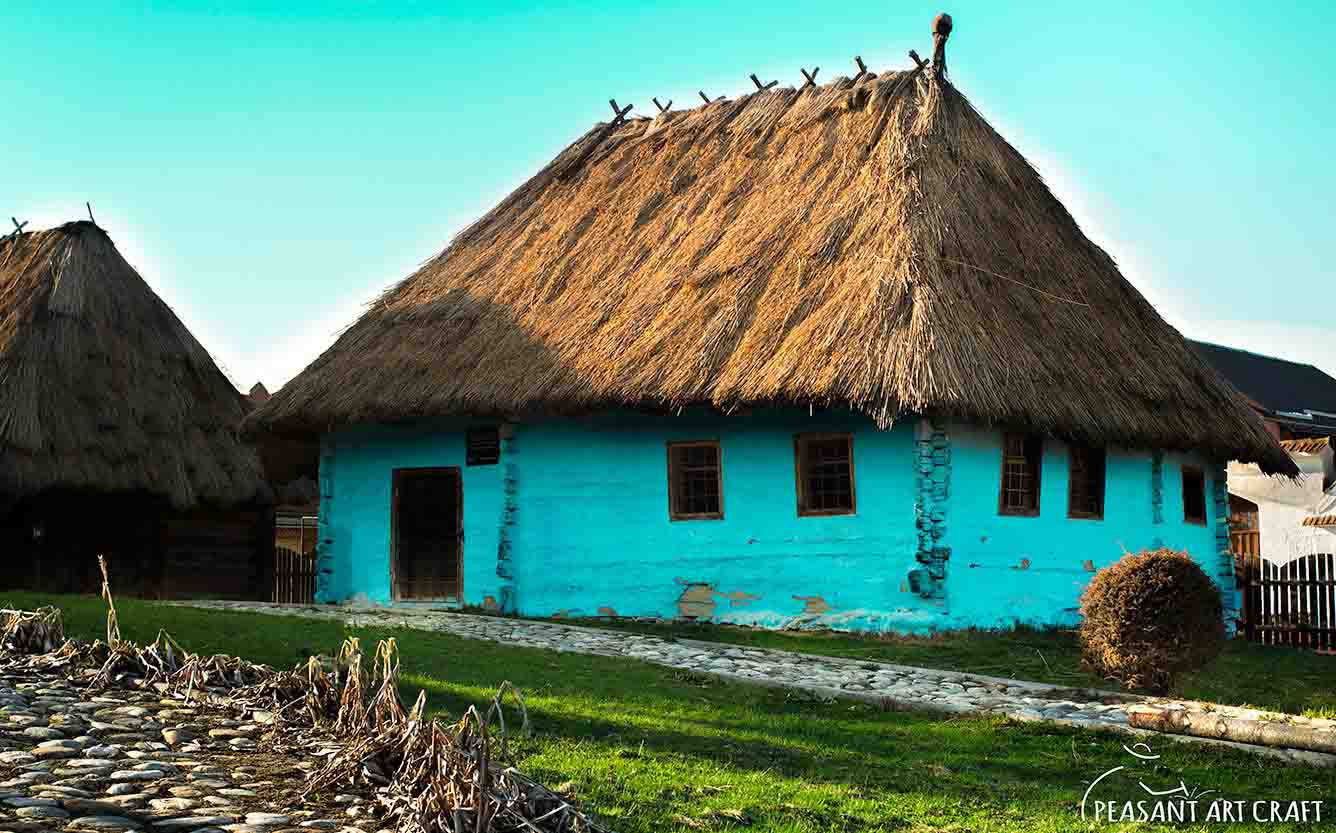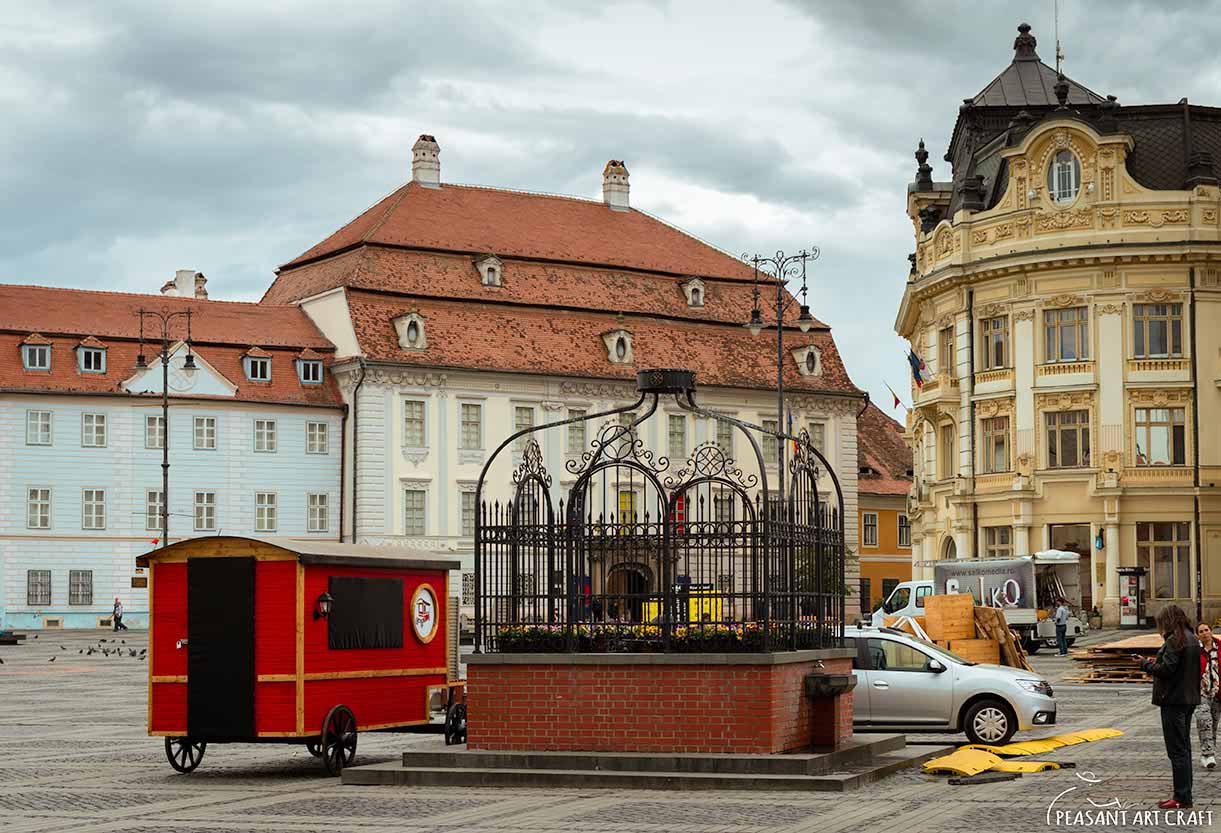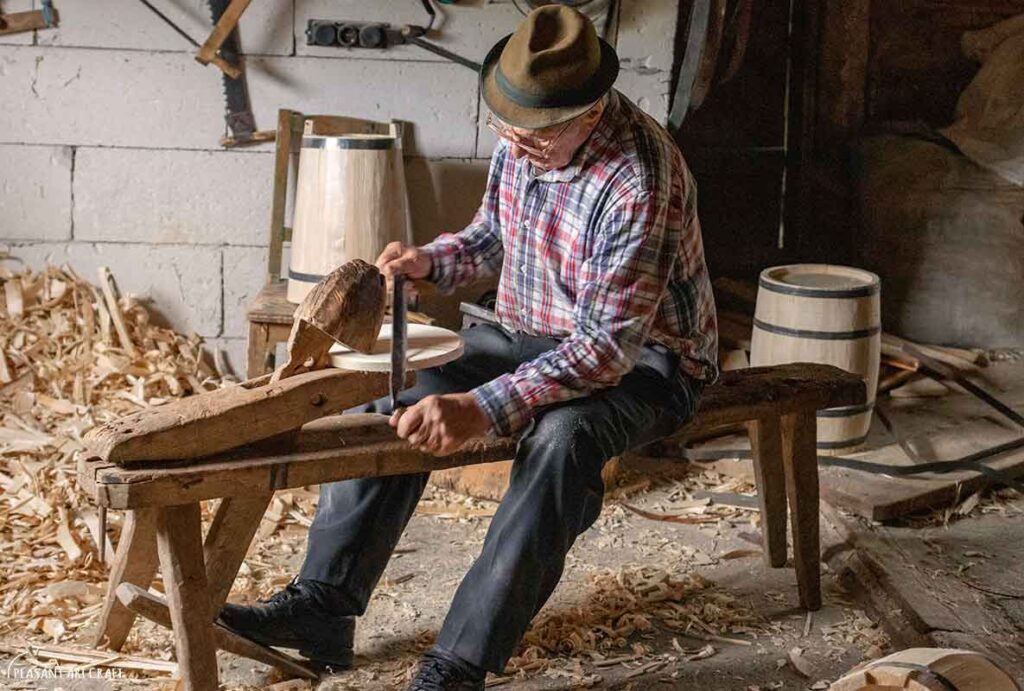What make Romania unique are the huge regional differences. Not only there are differences in landscape and climate, but also in the village settlements, architecture and people who live in each of these regions. Travel north to south and you won’t get bored. This year, we took a Transylvania trip on a mission to connect with people and experience daily life.

I wanted experiences beyond museums and castles in a land which transports you back to medieval times with it’s compact pastel villages settled at distance from each other, with it’s wild animals crossing your path and the brown bear roaming the forests.

Cannot recommend Transylvanian tours highly enough. To begin with the tourist attractions, here are seven best places to visit on your Transylvania trip:
Visit Idillyc City of Sibiu
Among the seven fortified cities built by the Transylvanian Saxons, Sibiu (also known as Hermannstadt) is a top place to tick off your Transylvanian attractions list.

A cultural capital in 2007, with full schedule of concerts, exhibitions, theatres, fairs, chosen to be the Gastronomic Capital of Europe in 2019, with delicious local cuisine influenced by Saxons and Hungarian communities, Sibiu is often recommended as one of Europe’s top places to live in. No visit to Sibiu is complete without a stroll on the streets of the old town, so take at least one day for a city sightseeing.


Dating back to Middle Age, there’s no shortage of historic sites to see, starting with the Baroque style Brukenthal Palace, the Blue House, the Haller House and the Catholic Church from the 14th century Large Square, continuing with the old attractions from the Small Square, the Council Tower, the Bridge of Lies, Hermes House and ending with the most beautiful street of Sibiu, Cetății Street, reuniting 15th century fortified walls and towers, Turnul Dulgherilor (Carpenters Tower), Turnul Archebuzierilor (Harquebusier Tower) and Turnul Olarilor (Potters Tower). Take a day tour to visit the seven towers of Sibiu.

If you love stunning views, climb the 141 steps of the Council Tower from the Small Square and feast your eyes with great view of Sibiu from up high. If you’re feeling even more adventurous, climb the moving metal stairs anchored in the beams at great height up in the dark Gothic Lutheran Evangelical church tower on Huet Square and you will be rewarded with the best panoramic view over the city.


Rest your feet with a coffee or a local dish at one of the nostalgic cafes and bistros tucked away on narrow cobblestone streets.
the largest outdoor museum in Europe, the Astra Museum of Folkloric Traditional Civilization, exhibiting Romanian farmyards from all over the country. It is located within a forest. There is a lake in the center, where you can take a boat trip.
Add Medieval City of Brasov to Your Transylvania Trip List
With it’s cobblestone streets and wonderful blend of architecture, gothic, baroque and renaissance, Brașov (Kronstadt ) is a city with one foot in the past. Founded in 1211 by a German order of teutonic knights and settled by the Saxons, the city soaks up the spirit of the Middle-Ages. It is one of the seven walled citadels of Transylvania.


At the center of the Old Town of Brașov is Piața Sfatului (The Council Square), surrounded by baroque buildings with colorfully painted facades, a place of public trials and executions during the Dark Ages.


Nearby, there is the Black Church, the largest Gothic church in Romania and the most emblematic building of Brașov, home to the largest pipe organ in Romania and to an impressive collection of antique Anatolian prayer rugs. It was named after the great fire of 1689, when smoke blackened it’s walls.


Only two minutes away from the Black Church is the narrowest street in Romania, Strada Sforii (The Rope Street), four feet wide, initially used as a means of access for firefighters, now a fun place to snap selfies.

Part of the defense walls against Mongols and Turks, built between 15th and 17th centuries, can still be seen today. There are few surviving bastions – The Graft Bastion, Blacksmith’s Bastion, the 15th century White and Black Towers and an original entrance, Catherine’s Gate survived the test of time.
Spend a Day in Sighișoara, The Medieval Citadel Still Inhabited

The city of Sighișoara, located on the Târnava River in Mureș county, is home to a true gem which draws crowds: the old historical section. Built upon a hill slope, the history of the medieval citadel goes back to the 1st century AD, when the Dacians – Romanians’ ancestors – built the first fortification.


Later on, in the 12th century, the Transylvanian Saxons built a new fortification called Schassburg. It wasn’t until 1431, when the actual name, Sighișoara, was first mentioned in a written paper issued by Vrad Dracul, father of Vlad the Impaler.


Every corner of the historic center gives a taste of old times: the Gothic Church on the Hill with frescoes dating back to the 15th century, pastel colored Saxon houses, cobbled streets, nine towers still standing, built between 14th to 16th centuries by the Saxon craft guilds, among which, the Clock Tower offers a lookout overseeing the whole city. Meet the last leather belt-maker still working in the Furriers Tower following her guild extinction.
Hit the Picturesque Transylvanian Village of Biertan
If you’re driving from Sighișoara to Sibiu, the large fortified UNESCO listed village of Biertan (Birthalm) is definitely worth a detour. It is one of the most important Saxon villages.

For hundreds of years, the fortified church perched on a hilltop, built in 1490 offered hope for couples who wanted to end the marriage, by throwing them into prison for a while, in an attempt at reconciliation, and it worked! A single divorce registered in 300 years.
Explore Transylvanian Villages With Fortified Churches
The most significant attraction of Transylvania is it’s rich Saxon heritage. Six Saxon Transylvanian villages with fortified churches, founded in the Medieval Ages by German colonists and one Székely are UNESCO listed: Biertan, Câlnic, Dârjiu, Prejmer, Saschiz, Valea Viilor, Viscri.

One of the oldest and most famous village in Brașov is the village of Viscri. Fascinated by it’s rustic charm and rural atmosphere , Prince Charles comes here often. People still live by subsistence agriculture and the growth of tourism has had a positive and considerable effect on traditional crafts in the village.
Take a Scenic Drive in the Fagaras Mountains on Transfagarasan Road


Rising as high as 8346 feet ,with hard rocks, tall and icy peaks, the Făgăraș Mountains are an iconic landmark of Romania. This subunit of the Southern Carpathians is the most important, having the highest peaks, above 2500 meters. Moldoveanu peak at 2544 meters is the highest point in Romania.

From the the village of Cartisoara, home to self thaught shepherd who fought for independence and travelled on foot to Rome, Badea Cârțan, in Sibiu County, marking the start of the ascent on one of the world’s best scenic road, the Transfagarasan Highway stretches 150 km through the mountains, with many twists and turns and stops near Bascov commune (Argeș county).


At 1234 meters altitude, 60 meters tall Bâlea Waterfall is one of the scenic places of natural beauty accessible via Transfagarasan Road, open July to October.

In winter, when the road is closed, you can leave your car here and take the cable car to around 2042 m at Lake Balea, the road’s highest point.
Visit Enchanting Transylvania Castles and Fortresses Tour
This section features several affiliate links, meaning we’ll earn a small commission if you purchase through these links. Please see our Privacy Policy for more details.

With so many beautiful castles and fortresses to visit on your Transylvania trip, it can be hard to single out which ones you absolute have to see, but the two most popular is 19th century Peles Castle and the medieval mid-1300 Bran Castle. The unashamedly luxurious Neo-Renaissance Peles Castle, located at the base of the Bucegi mountains, near Sinaia, in Prahova County was a royal residence over time. Professional photo tax is no less than $350 and online publishing of pictures or movies is forbidden.
Bran Castle and Rasnov Fortress Tour from Brasov with Optional Peles Castle Visit
Towering above the village of Bran in Brasov County, the medieval Bran Castle is filled with period furniture with gorgeous turrets and balconies. Expect a medieval castle, not the supernatural!


Fagaras Fortress, Brasov County
Less popularized Transylvania Castles and Fortresses than the above mentioned are the Gothic-style Corvin Castle in Hunedoara County, the Fortress in Cluj-Napoca, Rasnov Citadel and the Fagaras Fortress in Brasov County. The recently renovated Fagaras fortress, surrounded by water, was never conquered. There is a museum at the first floor and an exhibition with specific objects like costumes, furniture, weapons.











City of Sibiu


City of Sibiu

City of Sibiu


City of Sibiu

City of Sibiu


City of Brasov
Read Also
Cheese Making The Old Fashioned Way at Traditional Romanian Sheepfold
Cheesemaking in Transylvania – Traditional Sheep Cheese Recipes















Blog Comments
Diana Baker
May 10, 2019 at 9:38 pm
Can you recommend a tour company that will take English speaking visitors on tours of Romanian folk crafts and villages, including Maramures?
Bianca
May 12, 2019 at 8:01 am
Diana, unfortunately, I wouldn’t recommend a good/service I didn’t try personally. Gr. Bianca.
Helly Pandya
April 10, 2024 at 10:07 pm
I was enchanted by the rich history and cultural heritage preserved within these ancient walls. From the iconic Clock Tower to the charming cafes lining the square, every corner told a story of centuries past.